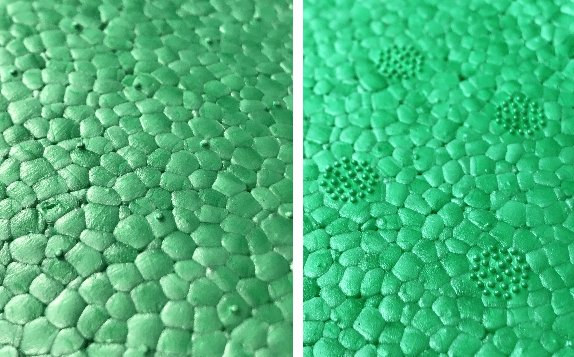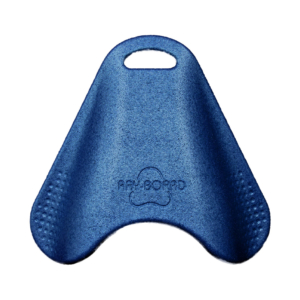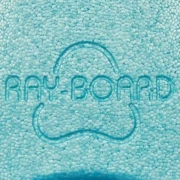Foam Kickboard – Choose the Best Material
Foam Kickboards – Are all foams the same?
Swim kickboards typically come in one of four materials. Although they are all foams, they are not all the same. The material used in your foam kickboard will affect its performance and durability. This article should help you decide which foam kickboard is right for you. A few terms you’ll hear throughout this article.
- Density – A foam’s density is a measure of its weight per volume. The lower the density the more air it has within it and the more buoyant it is.
- Stiffness – Foams come in a range of stiffness’s. Some are rigid (i.e. highly stiff) so they don’t bent during use. Others are quite soft (i.e. low stiffness) and are easily bent.
- Durability – This is relates to how long the foam will last. Some foams are easy to break and thus aren’t great for performance kickboards. Other foams are not resistant to water or chemicals (e.g. chlorine) and will lose their durability with time.
EVA (ethylene-vinyl acetate)
EVA foam is the most commonly used material for kickboards. It comes is a variety of densities and stiffness’s. These properties depend on how the kickboard is manufactured. Some are produced by thermoforming, which cuts and presses a flat foam sheet into the desired shape. These can be stiff, but they need to be flat and featureless. Others are molded, which allows for more interesting shapes, but results in a less stiff kickboard. The cost of molding is greater than thermoforming. Other products made from EVA include running shoes. Most kickboards from TYR, Speedo and Finis are made from EVA.
EPP (expanded polypropylene)
EPP foam is a highly versatile foam that provides a unique range of properties, including outstanding buoyancy, strength to weight ratio, impact resistance, and chemical resistance. It is also 100% recyclable. Different from EVA, EPP can be molded into complex shapes while retaining stiffness. This is why Ray-Board is made of EPP. Other products made from EPP include foam rollers used in gyms. When seeking 3D shapes, high stiffness, and durability, EPP kickboards are an excellent solution.

EPS (expanded polystyrene)
EPS, which is commonly called Styrofoam®, is rigid and highly buoyant. Unfortunately this low cost material is also easy to break, which makes is less than ideal for a swim kickboard. Children’s kickboards with applied graphics are often made from EPS, but these are typically not suitable for swim training.
EPE (expanded polyethylene)
EPE is a low quality foam commonly used to make swim “noodles”. It is soft and flexible and very inexpensive. Some kid and novelty kickboards are make from EPE, but it is not commonly used for performance products.
So Which Foam Kickboard Should You Choose?
We are admittedly biased, but Ray-Board has a lot of things going for it beyond the material. It’s unique design puts your body in the correct and most comfortable position for kicking. Forget about the sore neck, back or shoulders that are common with flat kickboards. Ray-Board will have you kicking in comfort.




